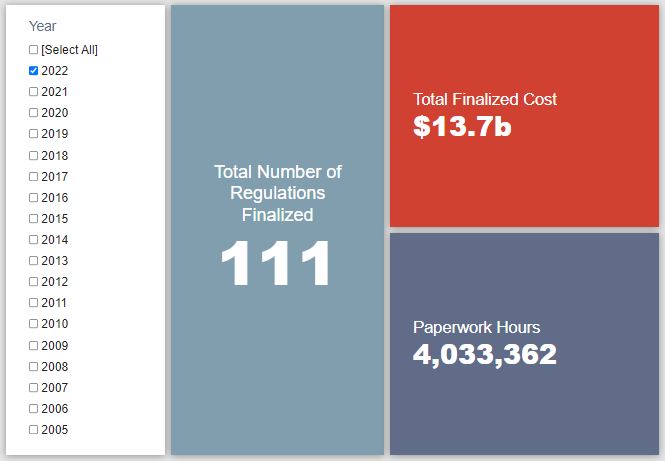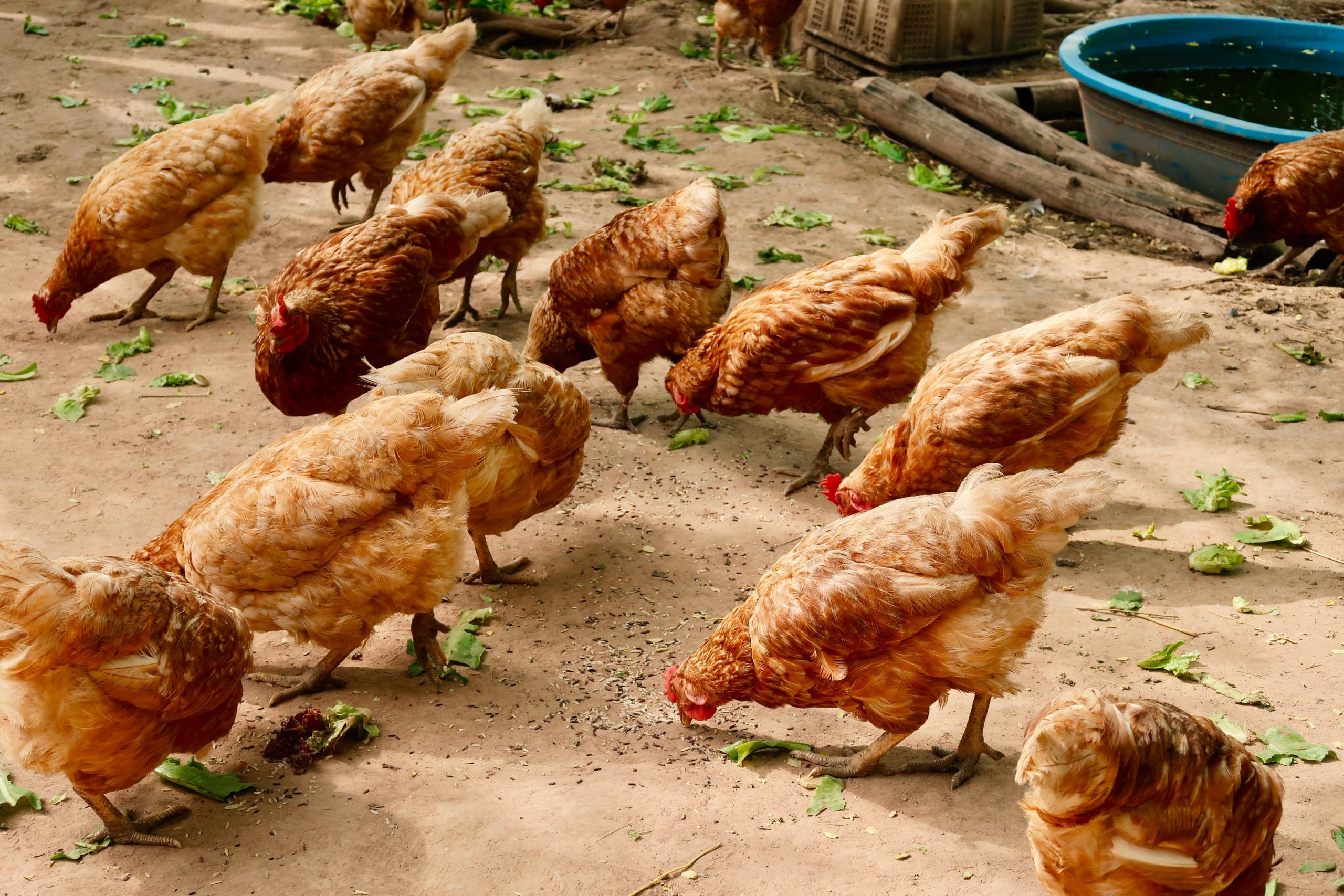Week in Regulation
June 13, 2022
An Early June Slowdown
Last week there were a dozen rulemakings with some measurable economic impact. Alas, there were not many major actions coming out of that haul. “Glossy” financial reports and poultry growing tournaments stood out as the most interesting and/or consequential issues of the week. Across all rulemakings, agencies published $30.9 million in total net costs and added 155,415 annual paperwork burden hours.
REGULATORY TOPLINES
- Proposed Rules: 42
- Final Rules: 72
- 2022 Total Pages: 35,589
- 2022 Final Rule Costs: $13.7 billion
- 2022 Proposed Rule Costs: $75.1 billion
NOTABLE REGULATORY ACTIONS
The most significant rulemaking of the week (in terms of economic impact, at least) was a Securities and Exchange Commission (SEC) rule regarding “Updating EDGAR [Electronic Data Gathering, Analysis, and Retrieval] Filing Requirements and Form 144 Filings.” The rule updates reporting requirements to mandate the electronic submission of various information collections, including “annual reports to security holders (colloquially referred to as the ’glossy’ annual reports).” This new requirement would lead to a certain set of affected entities having to submit these reports electronically even if they already regularly submitted the hard-copy version. SEC estimates that this would represent roughly 82,000 hours of paperwork annually with a commensurate cost of nearly $10 million.
TRACKING THE ADMINISTRATIONS
As we have already seen from executive orders and memos, the Biden Administration will surely provide plenty of contrasts with the Trump Administration on the regulatory front. And while there is a general expectation that the current administration will seek to broadly restore Obama-esque regulatory actions, there will also be areas where it charts its own course. Since the AAF RegRodeo data extend back to 2005, it is possible to provide weekly updates on how the top-level trends of President Biden’s regulatory record track with those of his two most recent predecessors. The following table provides the cumulative totals of final rules containing some quantified economic impact from each administration through this point in their respective terms.
![]()
As discussed above, this past week was a relatively quiet one for the Biden Administration. It turns out that that trend also holds for the preceding two administrations as well. There was very little to report on from either early June 2018 (Trump) or early June 2010 (Obama). The most notable shift – to the extent one can describe it as such – was a $32 million increase in costs under the Obama Administration. A handful of routine airworthiness directives were responsible for the entirety of that bump.
THIS WEEK’S REGULATORY PICTURE
This week, newly proposed transparency requirements for poultry growing tournaments.
Source: “Hen” by Chatnarin Pramnapan
On June 8, the Agricultural Marketing Service (AMS), an agency within the Department of Agriculture, published two actions in the Federal Register pertaining to poultry growing tournaments. Less dramatic than the term implies, tournaments are payment structures under which most poultry growers are compensated for raising birds (most often broiler chickens like those pictured above) for poultry dealers.
Tournaments pay growers based on how the flocks they raised compare with others contracted to the same dealer over the same period. The AMS uses as an example an agreement where a dealer will pay an average of six cents per pound to grower in a tournament. The dealer then calculates the average weight of flocks returned by the grower and adjusts compensation by the grower’s deviation from average within the tournament grouping for that specific period. The six-cent average might be adjusted to $.0725 for an above-average grower, while a below-average grower may be paid $.048, per the AMS example.
Growers have complained for years that they lack adequate information regarding improving their output and how the final pay is determined. They also argue that tournaments are not reflective of grower skill and efficiency as the structure implies, but instead are often determined by circumstances dictated by the dealer that are beyond their control.
To address this information asymmetry, AMS proposed two actions. The first is a proposed rule that would require dealers to disclose to growers how the growing arrangement will work and clarify that a growers compensation will primarily be based on factors under the dealers control, among other disclosures pertaining to investments required by growers in general (including those growers not compensated through tournaments).
The second action is an advanced notice of proposed rulemaking that “seeks comments and information to inform policy development and future rulemaking proposals regarding the use of poultry grower ranking systems commonly known as tournaments in contract poultry production.” Depending on the comments received, AMS may consider making major changes to tournament structures, including prohibiting the practice.
TOTAL BURDENS
Since January 1, the federal government has published $88.8 billion in total net costs (with $13.7 billion in new costs from finalized rules) and 50.1 million hours of net annual paperwork burden increases (with 4 million hours in increases from final rules).













